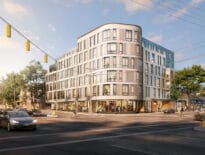
Susan Gittelman
Putting politics aside, there has been a broad consensus emerging that investing in America’s infrastructure is critically important.
Clearly infrastructure includes roads and bridges, airports and transit. But it has become absolutely apparent is that broadband internet is infrastructure too.
The pandemic has laid bare the extent of the digital divide that exists – reliable broadband access is essential to modern work and life. Those who were digitally connected were able to work from home or attend school from home, while the disconnected have been left behind.
In “Bridging the Digital Divide in Affordable Housing Communities,” the collaborative group Stewards of Affordable Housing for the Future observed that “for millions of people of limited economic means – a disproportionate number of whom are people of color – little or no connectivity has deepened health and economic inequities. This includes many residents of affordable housing, who are nearly twice as likely to lack high-speed internet connections as the general population….”
The Biden administration’s ambitious American Jobs Plan has broadband provisions to build high-speed broadband to reach 100 percent of Americans, including in rural areas, to promote price awareness and competition, and to reduce the cost while encouraging more widespread use.
The public interest group Free Press says that 77 million Americans lack adequate internet service, and only a third of the poorest have internet at home. One report showed 82 percent of white households have a computer at home, compared to about 58 percent of black and Hispanic Americans.
Biden, GOP Plans Offer Investments
Legislation in Washington, D.C. includes how to address broadband inadequacy and inequality. The Biden plan has started with $100 million, and Republicans countered with $65 million. It is notable that both recognize the importance of broadband.
But how any final figure gets allocated is important. Low- and moderate-income residents must get access to this resource. And there are a number of initiatives already in play.
Last month the Federal Communication Commission launched an Emergency Benefit Program, which provides $50 a month to eligible households to pay for broadband as well as other financial assistance. That is temporary and only benefits people who live in areas where connectivity exists. But the demand has been overwhelming.
And as it relates to affordable housing, the connection to broadband is most important.
“There’s a lot of interest in broadband and affordable housing, and if you connect those two it makes a lot of sense,” Aaron Gornstein the President of the nonprofit Preservation of Affordable Housing noted. “The challenge is cost.”
On that front there is discussion about the federal Housing and Urban Development making capital grants to owners of affordable housing to enable them to provide low-cost, quality service to renters.
A more extensive approach is the Broadband Justice Act, which would declare broadband service a utility, like electricity, heat and water, and could bring service to 8 million households. Just as the federal government either subsidizes or makes provision for utilities in low-income, Section 8 housing and other public housing, the cost of broadband could be built into the cost structure of operating these properties.
Refreshing Recognition of Importance
Besides cost, there are structural obstacles to expanding access to broadband. There is debate over extending service to less populated rural areas vs. increasing density in underserved urban neighborhoods; identifying who should be running networks, how to pay for ongoing costs, and who is best positioned to establish these systems; whether to subsidize and facilitate individuals’ ability to connect versus funding property owners or even broadband providers; and how to deal with municipal systems in the first place.
But what is refreshing is that there is now bipartisan recognition that the federal government should make a major commitment to broadband. Some are motivated by the humanitarian concern accelerated by the pandemic about the toll that the digital divide has had on poorer Americans. Others are motivated by international concerns that countries like China threaten to roar ahead on advancements such as 5G technology and that we need to stay competitive.
In the 1930s, the federal government invested in extending electricity to virtually all Americans. And even earlier than that, the U.S. postal service shouldered the high cost of delivering to few people in far-flung regions.
By any measure, broadband internet is a basic service, and investment in this infrastructure is on the way. We need to find the most efficient and speediest way to get it to most people, keeping an open mind regarding subsidized service. With consensus brewing, there is no time like the present.
Susan Gittelman is the executive director of B’nai B’rith Housing, a nonprofit affordable housing developer currently working in Boston, Sudbury, and Swampscott.




 |
| 

